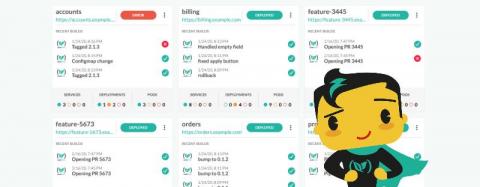Operations | Monitoring | ITSM | DevOps | Cloud
Codefresh
Deprecating the Codefresh Registry
Today we are announcing the removal of the built-in Docker registry that comes built-in with all Codefresh accounts. The registry will become read-only on April 15, 2020 and we’re aiming to remove it completely May 1, 2020.
Three Ways to Create Docker Images for Java
Long before Dockerfiles, Java developers worked with single deployment units (WARs, JARs, EARs, etc.). As you likely know by now, it is best practice to work in micro-services, deploying a small number of deployment units per JVM. Instead of one giant, monolithic application, you build your application such that each service can run on its own. This is where Docker comes in!
Announcing a new dashboard for Deployment Environments
One of the central ideas behind the Codefresh GUI is giving as much information as possible to both developers and operators regarding the status of a deployment. Just because a pipeline has finished successfully does not always mean that the respective environment is healthy.
Part 2 The World's First CI/CD Live Debugger In Codefresh: Container Tooling
Part 3 The World's First CI/CD Live Debugger In Codefresh: Dynamic Tooling
Part 1 The World's First CI/CD Live Debugger In Codefresh: Simple Debugging
Looking back at 2019 and why it was a great year for Codefresh
Like in 2018, now that 2019 is gone, it is time to look back and see all the major Codefresh features that were added over the past year. The highlight of the year was, of course, the world’s first live debugger for CI/CD pipelines, a feature that makes us really proud since it changes completely the way you create and analyze CI/CD pipelines.
Programmatic Creation of Codefresh Pipelines - Part 2
At Codefresh, we know that any CI/CD solution must be attractive to both developers and operators (SREs). One of the major advantages of Codefresh is the graphical user interface that includes dashboards for Kubernetes and Helm deployments. These graphical dashboards are very useful to developers who are just getting started with deployments and pipelines.
Integrating Open Source Management Into Your CI/CD Pipeline with WhiteSource
Open source components have become a basic building block in today’s software development process. It’s no surprise that 60%-80% of the codebase in 92% of modern applications is open source — they provide us with tried-and-true code that allows us to save time and focus on creating the secret sauce that will make our products the next great tech innovation.











